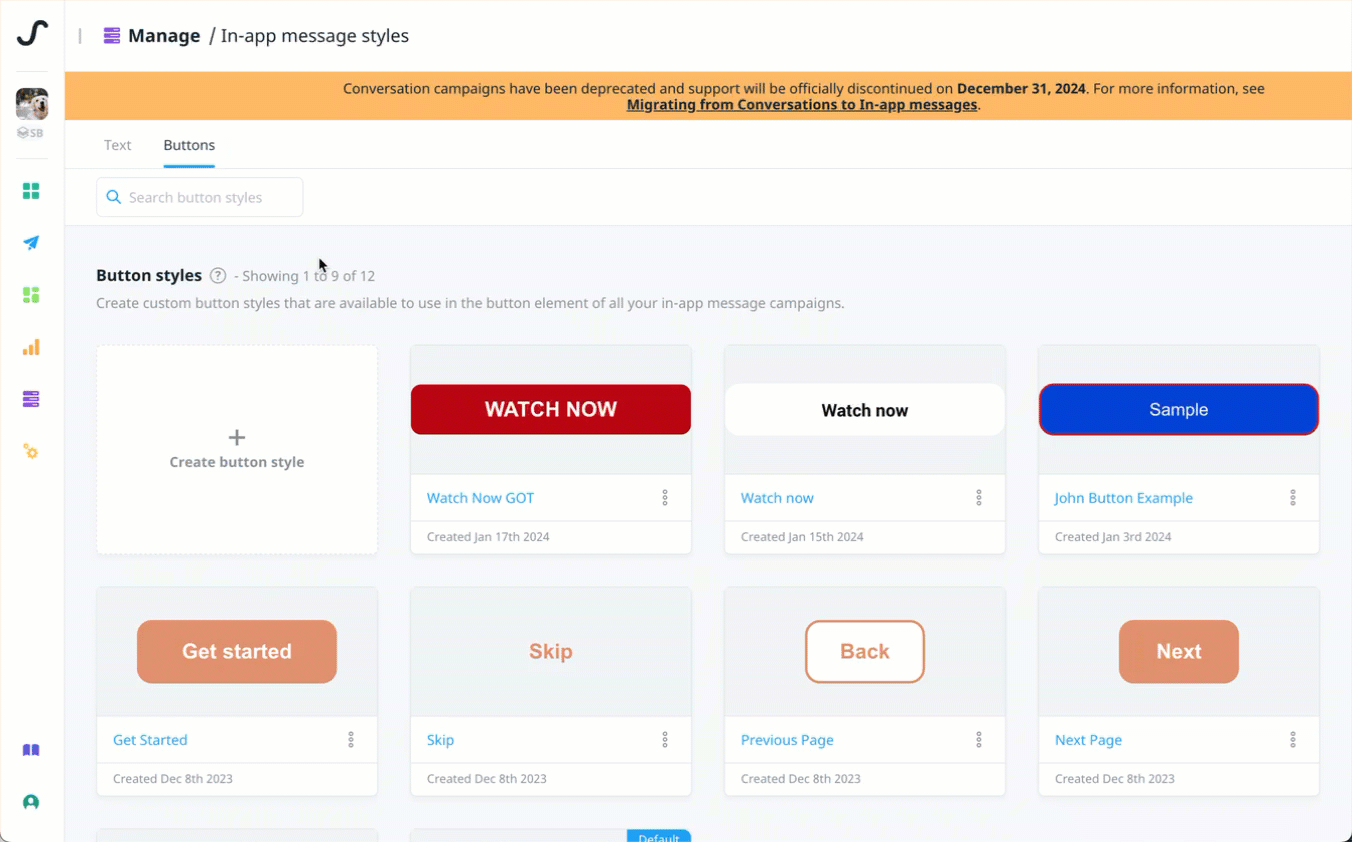Background
From 2014 to 2019, I served as the sole technical writer at Swrve, a mobile marketing and customer engagement platform with a diverse customer base that included enterprise clients such as RyanAir, Telefónica, Playrix, and InDrive. My primary responsibility was managing external documentation on docs.swrve.com, aimed at marketers using our platform.
In 2020, I was promoted to the role of Technical Content Manager, expanding my responsibilities to oversee both external documentation and UX writing for the Swrve platform. With this expanded scope, I faced challenges in balancing the time demands between writing UX copy for new features and maintaining external documentation. Content requests often came toward the end of the development cycle, creating several bottlenecks that impacted workflow and user experience.
The challenge
As content creation requests were typically received late in the development process, several issues arose:
-
Bottlenecks in the workflow: My late-stage involvement occasionally delayed feature releases while I scrambled to create documentation.
-
Missed opportunities for improved UX: Late-stage UX writing meant I couldn’t address user flow issues or inconsistencies in design patterns.
-
Unwieldy documentation: Help content was broad and required users to navigate away from the platform, often struggling to find relevant information.
It was around this time I attended the Button content design online conference. I immediately saw the value of including content from the start of a project, being more prescriptive in our use of content, and using data to drive our content decisions. I shared my learnings with my manager and he was keen to see how we could use the principles of content design to alleviate the pressure on my workflow and create an overall better experience for our users.
The project: Contextual help component
I made it my goal to trial including content design in an upcoming project that gave users a new management screen to create and manage their in-app message button styles. I chose the project as it was a brand new feature that would give users the ability to create on-brand button styles, which was an important factor in brand recognition for the customer and wider feature adoption of our in-app messaging product. I wanted to test if providing contextual help would make the feature easier to use and decrease visits to our help center documentation.
Applying Design Thinking to content development
I aligned the project with our design team’s focus on Design Thinking, following its five key stages: empathize, define, ideate, prototype, and test.
-
Empathize:
-
Analyzed Google Analytics data from the docs site to identify user behaviour. On average, users required 3-4 clicks and spent 2-3 minutes searching for help content.
-
Evaluated the cognitive load on users adapting to new concepts and explored how to deliver content where they needed it most—within the platform.
-
Researched patterns from other platforms, such as Gmail, that users would be familiar with and to identify effective methods for delivering help content.
-
-
Define:
-
Collaborated with the product manager and designer to refine the problem statement:
"Users spend unnecessary time searching for help content outside the platform, which disrupts their workflow and creates frustration."
-
-
Ideate:
-
Conducted brainstorming and sketching sessions to explore solutions.
-
Decided on a persistent, flexible contextual help component that could provide users with immediate access to relevant information.
-
-
Prototype:
-
Partnered with the lead frontend engineer to explore existing Storybook components. Determined that our existing drawer component, which blocked the workspace, was unsuitable.
-
Designed a new help component in Figma with clear headings and expandable sections to enhance scannability. The UI engineer confirmed its feasibility for development.
-
-
Testing:
-
Internally tested the prototype with Customer Support staff, who highlighted the improvement in proximity and relevance of help content.
-
Gave early access to a selected group of customers, receiving positive feedback on its usability and effectiveness.
-

The contextual help window in the button styles tab
Outcomes and impact
The integration of content design principles into our product development process led to several significant improvements:
-
Workflow efficiency:
-
Early involvement in the design process eliminated the bottleneck caused by reactive content creation.
-
My workload became more manageable as content was planned and created throughout the project lifecycle.
-
-
Improved user experience:
-
Contextual help reduced the need for users to leave the platform for documentation, making help content accessible in one click.
-
Google Analytics showed a measurable decline in searches related to in-app messaging, indicating the effectiveness of the new component.
-
-
User-centric content:
-
Applying content design principles ensured a judicious approach to content creation, focusing on clarity, relevance, and usability.
-
-
Organizational growth:
-
The success of this project demonstrated the organization’s openness to change and validated the importance of content design in product development.
-
Following this trial, content design became a standard part of the development process
-
Personal growth and team development
This project marked a turning point in my career. It not only reinforced my ability to lead cross-functional initiatives but also demonstrated the impact of proactive content strategy on user satisfaction.
Post-trial, I championed the continued adoption of content design principles at Swrve, mentoring a newly hired technical writer to expand her expertise in this area. Together, we established a scalable, user-focused content development process that benefited both the team and our users
Reflection
This project showcased how a proactive, design-centered approach to content could resolve long-standing challenges and deliver measurable results. By embedding content earlier in the process, we reduced user friction, improved workflows, and created a foundation for scalable, user-friendly content delivery.
Content design at Swrve
Role: Technical Content Manager, Swrve
Timeline: November 2021 - February 2022
Focus areas: Content design, UX writing, user-centred content